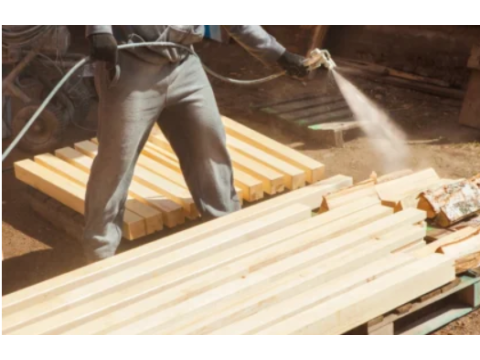Fire Protection for Wooden Structures: Techniques and Materials
At safsale.com, we provide advanced solutions for fireproofing wooden structures, ensuring compliance with safety standards and minimizing fire risks. Proper fire protection significantly enhances the fire resistance of wooden materials, making them safer for construction and long-term use.
Importance of Fire Protection for Wood
Wooden materials, while durable and versatile, are inherently flammable. Without treatment, they are classified with low fire resistance (G3 or lower), high flammability (B3), and intense smoke emission (D2-D3). Fireproofing treatments reduce these risks, meeting safety regulations and improving structural integrity during a fire.
Fireproofing Methods for Wooden Structures
Fireproofing involves specialized treatments designed to:
- Enhance fire resistance.
- Delay ignition and combustion.
- Minimize smoke and toxic emissions.
Key treatments include:
- Surface Coatings: Paints, varnishes, and lacquers.
- Impregnation: Deep penetration with fire-retardant solutions.
- Thick Coatings: Mastics and pastes for added insulation.
- Combined Methods: Multiple layers to maximize protection.
Types of Fire-Resistant Coatings
1. Fire-Resistant Paints
- Intumescent Paints: Expand under heat to form a thick, protective barrier.
- Non-Intumescent Paints: Provide basic fire resistance but wash out faster.
- Applications: Ideal for homes and commercial buildings; effective for up to 10+ years.
2. Varnishes and Lacquers
- Create a clear, protective layer while enhancing the wood’s appearance.
- Resistant to water and UV exposure, lasting over a year or longer with multiple coats.
3. Fire-Resistant Impregnation
- Deeply penetrates wood fibers, reducing flammability to a minimum.
- Often applied in industrial settings using heated tanks or autoclaves for maximum absorption.
Technology and Standards in the US
In the US, fireproofing treatments for wood are guided by stringent safety standards to ensure maximum effectiveness and durability. Advanced technologies, such as intumescent coatings and eco-friendly impregnations, align with US construction and safety requirements.
Fireproofing Process
The fireproofing process involves:
- Assessment: Evaluate the structure and wood condition.
- Preparation: Sand surfaces and remove impurities.
- Application: Apply multiple layers of fireproofing materials, ensuring proper drying between coats.
- Inspection: Conduct quality checks using professional tools and equipment.
At safsale.com, we ensure all treatments comply with local safety standards and inspection requirements, providing reliable fire protection for your structures.
Why Choose Fire Protection Solutions from Safsale.com?
Our fire protection products are designed for durability and efficiency, meeting the highest industry standards. Explore our range of fire-resistant coatings, impregnations, and more to safeguard your wooden structures today.
Visit safsale.com for expert advice and innovative fire protection solutions tailored to your needs.

